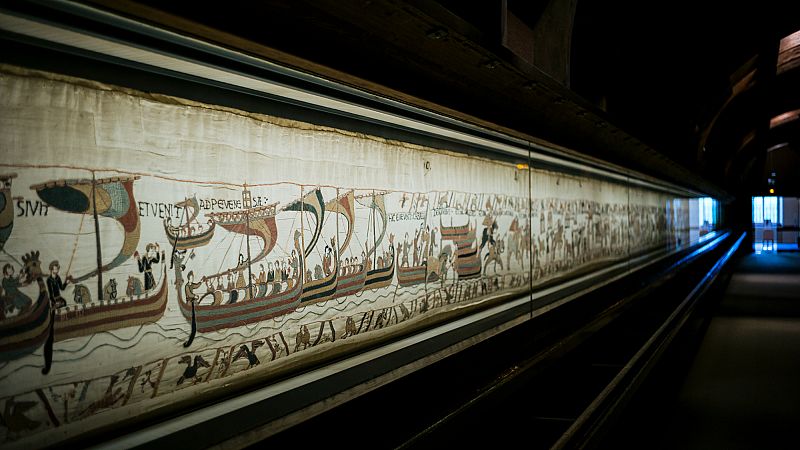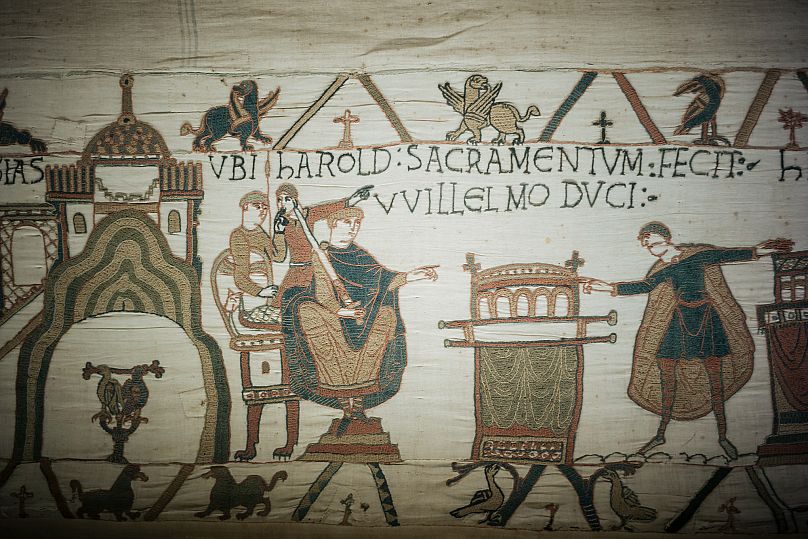
For nearly a thousand years, the Bayeux Tapestry hasn’t budged from France.
Now, a plan to send the fragile embroidery across the Channel to London's British Museum has ignited a storm of protest - with almost 50,000 people signing a petition that warns that one wrong move could destroy one of Europe’s greatest treasures.
The campaign, launched in July by French art historian Didier Rykner, argues that transporting the fragile embroidery to London’s British Museum is "a true heritage crime" and could cause irreparable damage to its linen fabric. Textile experts have echoed those fears.
“I think the tapestry must not be transported, for several reasons: its value is incalculable and if anything happens to it no amount of money and no other similar object can replace it,” the former director of the Bayeux Tapestry Museum, Isabelle Attard, told The Art Newspaper.
She added: “It’s [also] extremely fragile because of its age, past movements over the centuries, the way it has been subjected to almost non-stop lighting since its return to Bayeux after World War 2, and the way it’s currently presented, sewn to a textile support hung from a rail on little roller bearings, creating tensions everywhere.”

Rykner, editor of La Tribune de l’Art, is no stranger to high-profile cultural battles. He previously rallied nearly 300,000 signatures against Macron’s plan to install contemporary stained glass at Notre Dame Cathedral, though that effort ultimately failed.
The tapestry, which depicts the events leading up to the Norman conquest of England and the Battle of Hastings in 1066, and depicts 626 characters, 41 ships and 202 horses, is scheduled to go on display in London between September 2026 and July 2027 while its home in Normandy undergoes renovations.
When French President Emmanuel Macron confirmed the loan during his 2025 state visit to the UK – the first by an EU leader since Brexit – the symbolism wasn’t lost on either side of the Channel. After years of chilled relations, the move was seen as a gesture of renewed cultural warmth.
But the tapestry’s journey is also a literal homecoming. Historians widely believe it was originally stitched in England using wool thread on linen, meaning its temporary return will reunite it with its place of origin, says Bayeux Museum curator Antoine Verney.
The tapestry has survived invasions, revolutions and world wars. Napoleon displayed it in Paris in 1804, and the Allies rolled it out again in 1944 after liberating France. But even with that pedigree, its age is showing: “The textile fibres are 900 years old. So they have naturally degraded simply due to age,” Verney said. “But at the same time, this is a work that has already travelled extensively and been handled a great deal.”
Details of how it will be moved remain under discussion. The transfer is being worked out between the British and French governments, with conservation teams weighing every option – from humidity control and vibration monitoring to custom-built containers.







